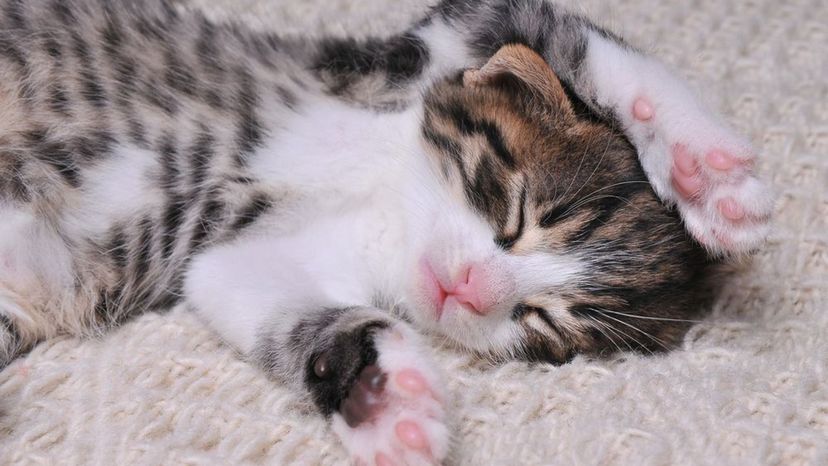
Image: Shutterstock
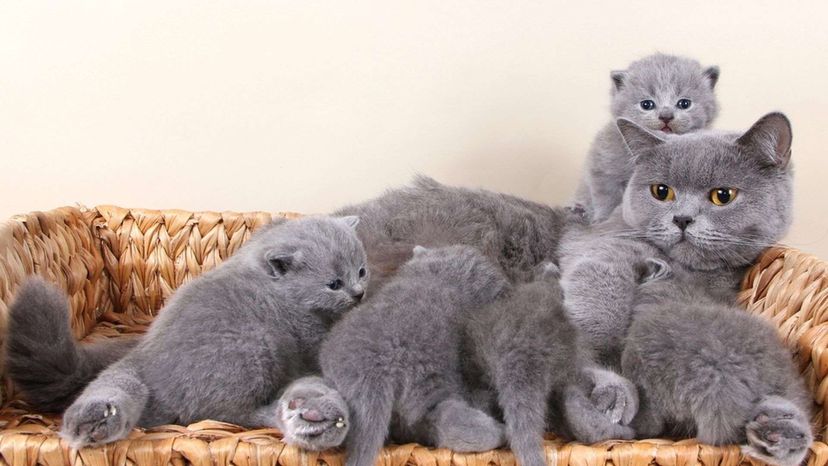
shutterstock
Identify the cat breed in this image.
Persian
British Shorthair
The British Shorthair is characterized by its chunky body, dense coat and broad face. They mostly come in a grey-brown color and tend to be quiet, undemanding companions.
Ragdoll
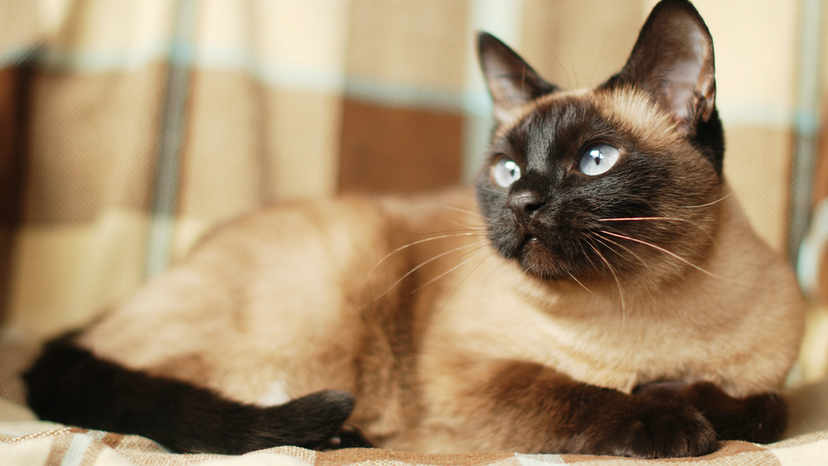
Shutterstock
Identify the cat breed in this image.
Siamese
Siamese cats have distinctively blue eyes, angular faces, and a unique color scheme. They are highly intelligent and communicate with a loud, insistent yowl. They also crave extensive human contact.
Mekong Bobtail
Minskin
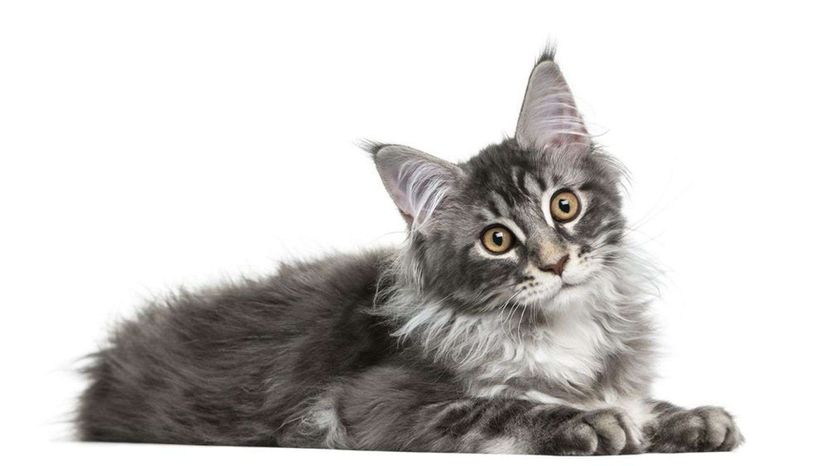
shutterstock
Identify the cat breed in this image.
British Shorthair
Maine Coon
Maine Coons are named for their fluffy, raccoon-like tail. They have a heavy, water-resistant coat over a muscular frame. They are one of the largest domestic cats, weighing between 10 and 18 pounds!
Persian
Advertisement
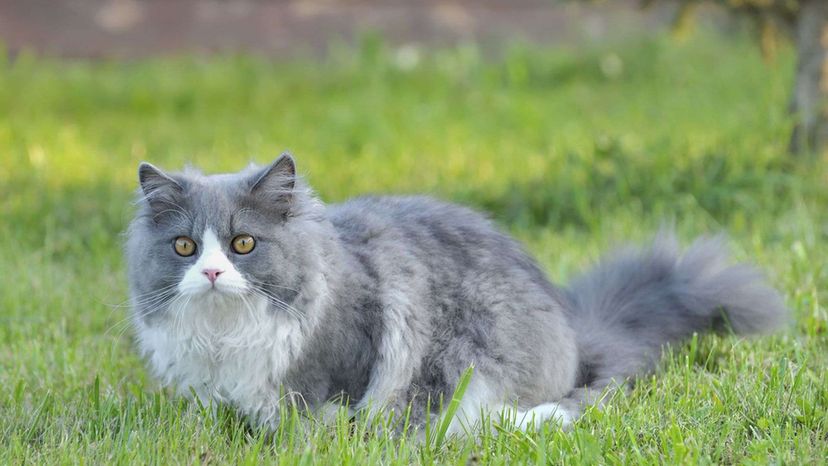
shutterstock
Identify the cat breed in this image.
British Shorthair
Sphynx
Ragdoll
Ragdoll cats have blue eyes and a distinct colorpoint coat. They are large and muscular with semi-long hair and a soft and silky coat.
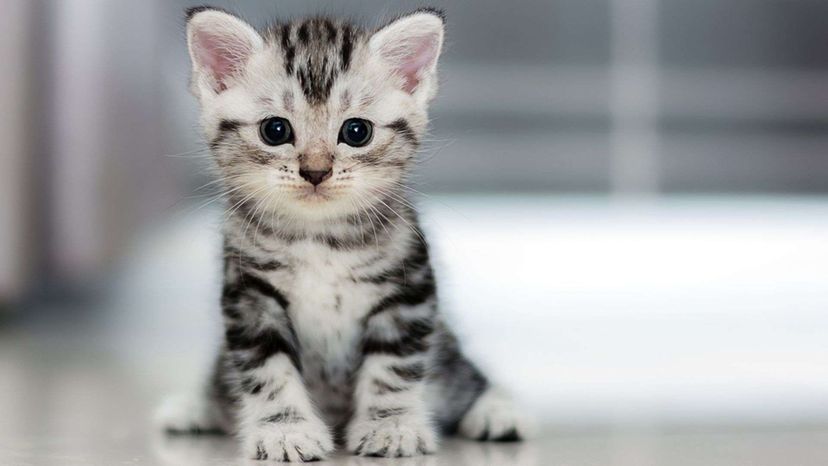
shutterstock
Identify the cat breed in this image.
Persian
American Shorthair
American Shorthairs were created by a mix of selective breeding and natural selection. They are sociable and easy to train. They also get along great with other pets and children!
Siamese
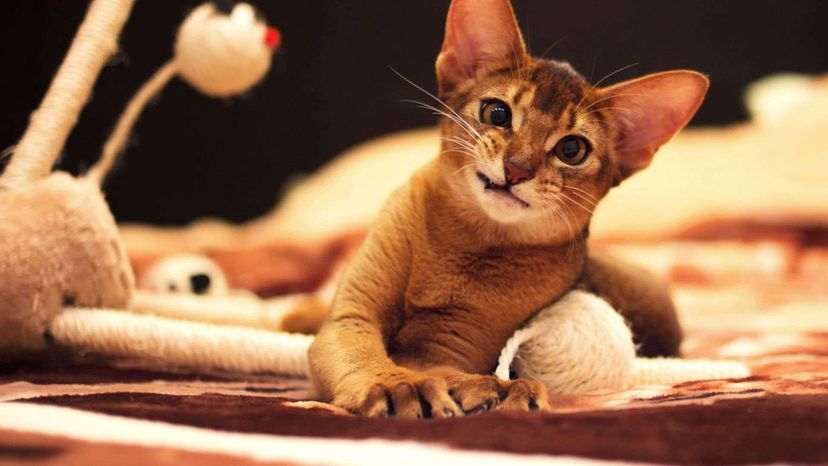
shutterstock
Identify the cat breed in this image.
Napoleon
Abyssinian
The Abyssinian breed is characterized by an extremely lean, lithe body, typically cinnamon-colored. They have large, expressive eyes and are quite playful. They also tend to display an almost doglike devotion to their owner.
Singapura
Advertisement
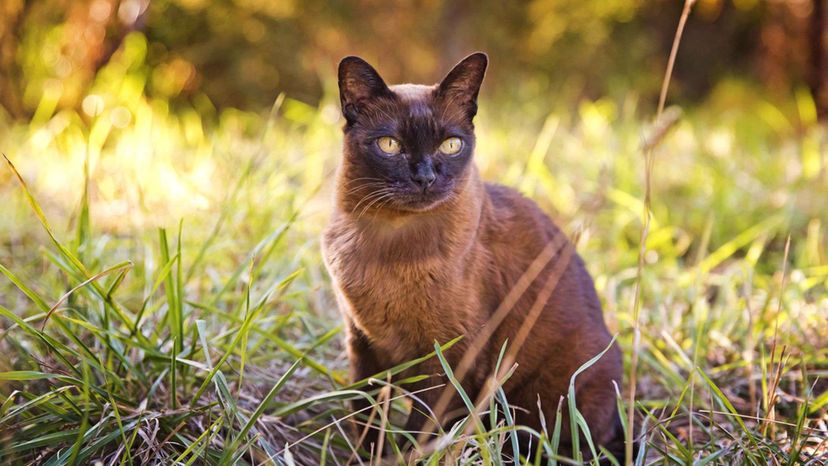
shutterstock
Identify the cat breed in this image.
Burmese
All North American and European Burmese were allegedly bred from a single specimen brought to America from Burma (where the breed is thought to be hundreds of years old) in the early twentieth century.
Selkirk Rex
Suphalak
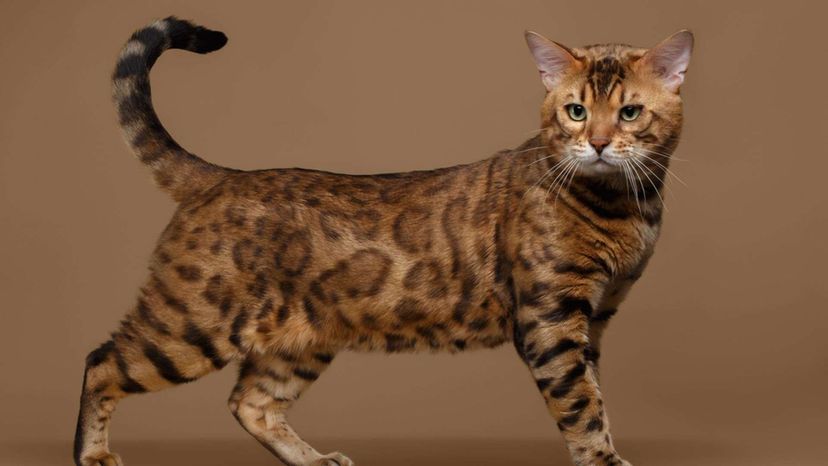
shutterstock
Identify the cat breed in this image.
Ukrainian Levkoy
Toyger
Bengal
Bengal cats are a domestic breed developed to look like exotic jungle cats, such as leopards, ocelots, margays and clouded leopards. They are playful and docile.
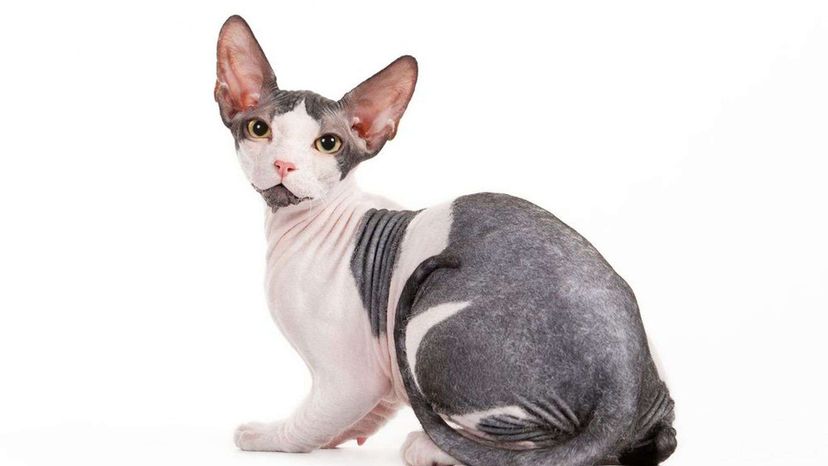
shutterstock
Identify the cat breed in this image.
Russian Blue
Sphynx
The Sphynx breed arose from a single mutated kitten born in Canada in 1966. Their skin is smooth and warm to the touch. Due to their vulnerability to things such as sunlight and allergens, they require special care and attention.
Sam Sweet
Advertisement
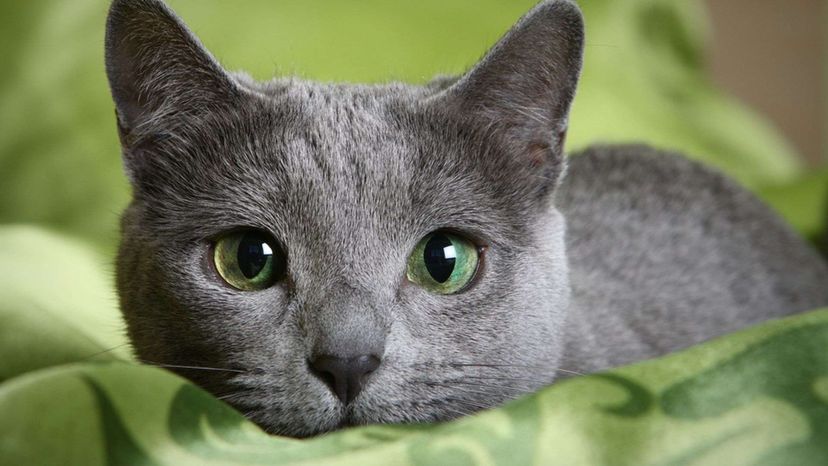
shutterstock
Identify the cat breed in this image.
Foldex
Sphynx
Russian Blue
The Russian Blue is a breed which comes in colors varying from a light shimmering silver to a darker slate grey. They develop close bonds with their owners and are sought out as pets due to their personalities, beauty and coat.
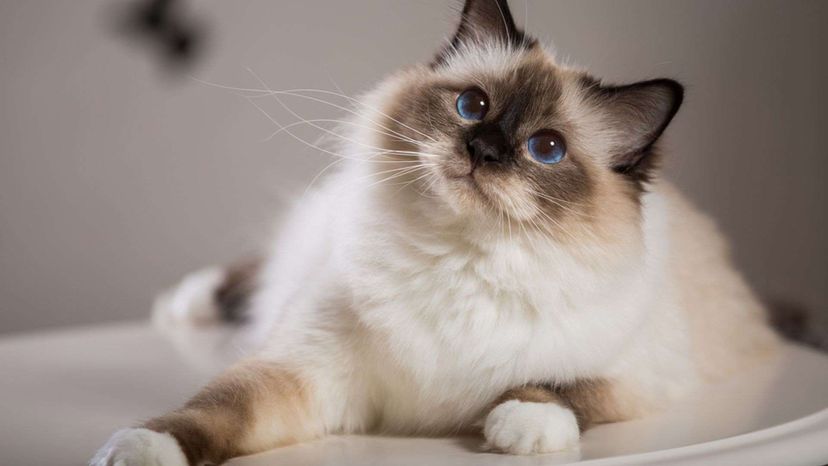
shutterstock
Identify the cat breed in this image.
Cheetoh
Birman
It is very difficult to breed a proper Birman. Kittens are expensive and waiting lists are long. They can be characterized by their easygoing personality and gregariousness.
Cyprus
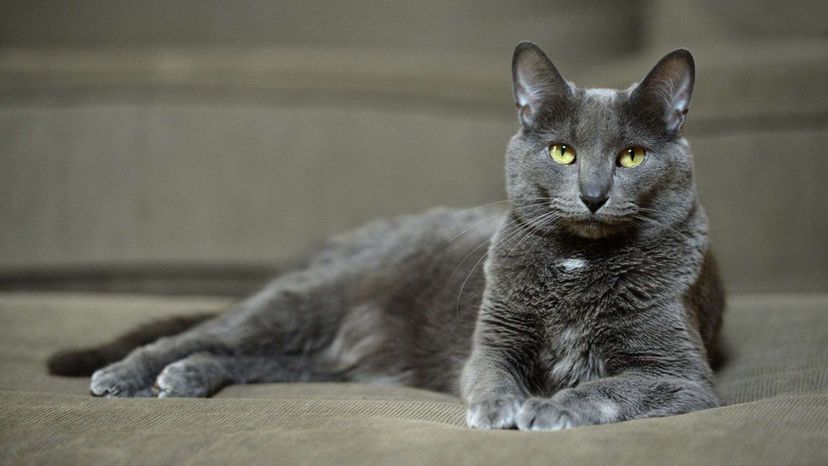
shutterstock
Identify the cat breed in this image.
Chantilly-Tiffany
Korat
The Korat is a living good-luck charm in Thailand, where the breed originated. They are silver-blue cats with emerald-green eyes and are said to date back to the 14th century, based on their depiction in ancient literature. They were popular gifts, always presented in pairs, and had special meaning when given to brides because of their association with prosperity and fertility.
Sphynx
Advertisement
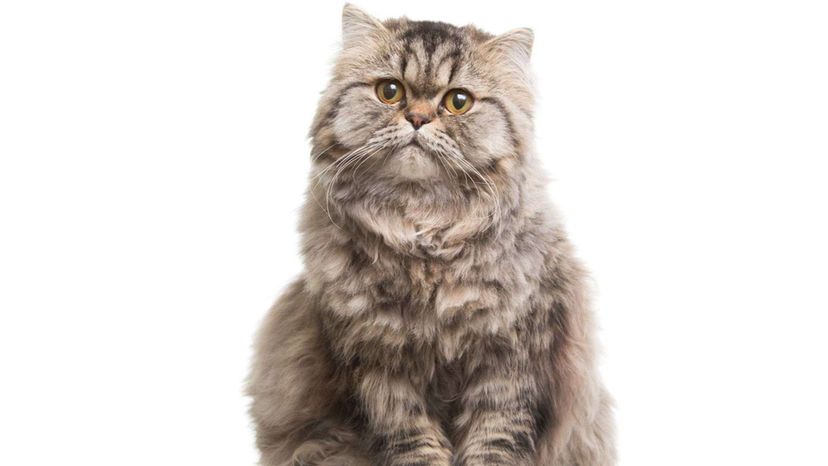
shutterstock
Identify the cat breed in this image.
Exotic shorthair
Persian
Persian cats are characterized by their compressed face, cobby body, and most famously their thick, glossy fur. They are extremely attractive and tend to have quite laid-back personalities. Not the smartest of the felines, however.
Maine Coon
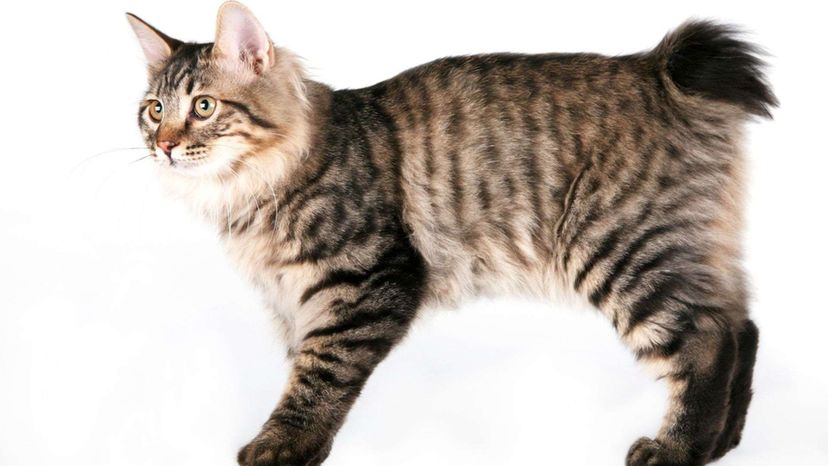
shutterstock
Identify the cat breed in this image.
Kurilian Bobtail
The Kurilian Bobtail is a cat breed originating from the Kuril Islands, as well as Sakhalin Island and the Kamchatka Peninsula of Russia. Short- or long-haired, it has a semi-cobby body type and a distinct short, fluffy tail.
Chartreux
Sphynx

shutterstock
Identify the cat breed in this image.
Burmese
Scottish Fold
The Scottish Fold breed can be traced back to "Susie," a floppy-eared cat spotted by shepherd William Ross on a Scottish farm in 1961. Poorly bred Scottish Folds can develop severe skeletal deformities.
Chausie
Advertisement
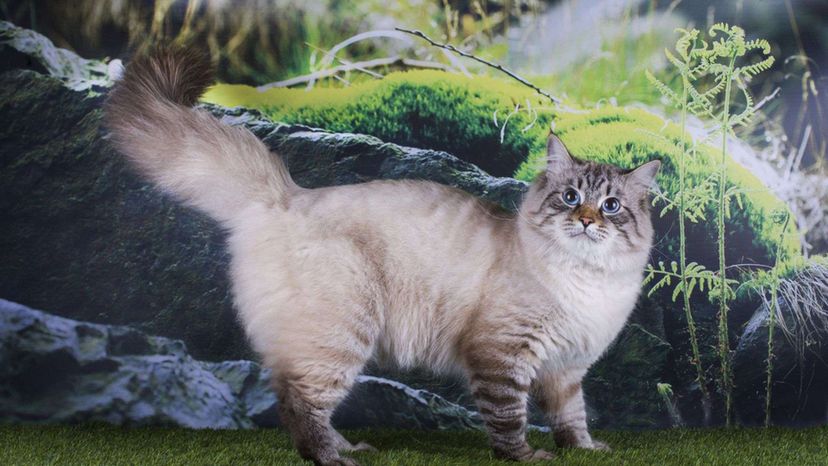
shutterstock
Identify the cat breed in this image.
Cymric
Havana Brown
Siberian
Siberians were first imported to the United States in 1990. The breed is gaining popularity because it has a reputation for being hypoallergenic (which may or may not be the case, depending on the person). They are an affectionate breed and range in weight from 8 to 17 pounds.
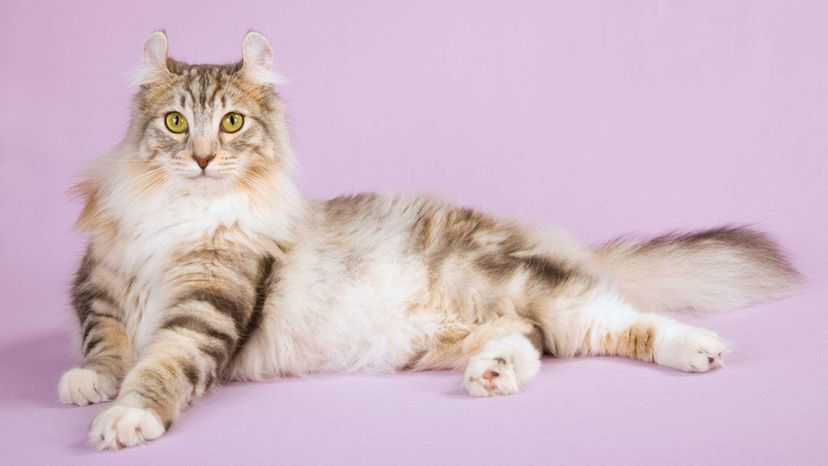
shutterstock
Identify the cat breed in this image.
American Curl
The American Curl is one of the youngest cat breeds. It was born of a natural genetic mutation that first appeared in Shulamith, a stray black kitten with long, silky hair and, strangely, ears that curled backward.
German Rex
Ojos Azules
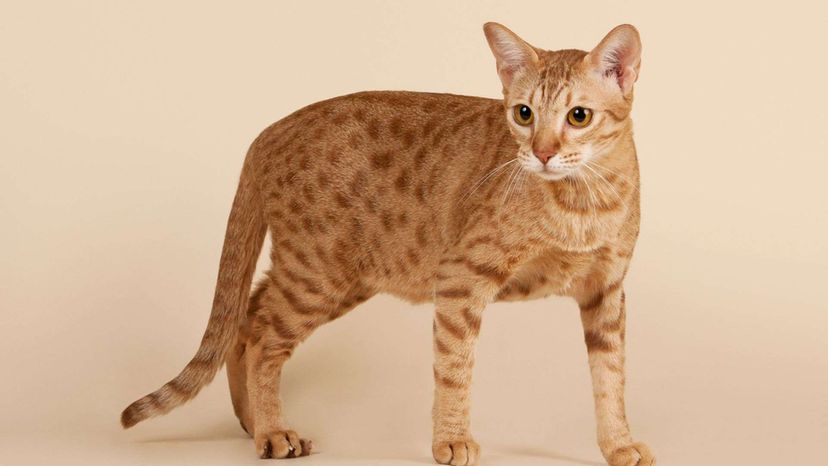
shutterstock
Identify the cat breed in this image.
Oriental Bicolor
Ocicat
Ocicats are rare and expensive. Perhaps this is because they don't mind being walked on a leash! This wild-looking, spotted breed has a short coat that requires minimal grooming.
Pixie-bob
Advertisement
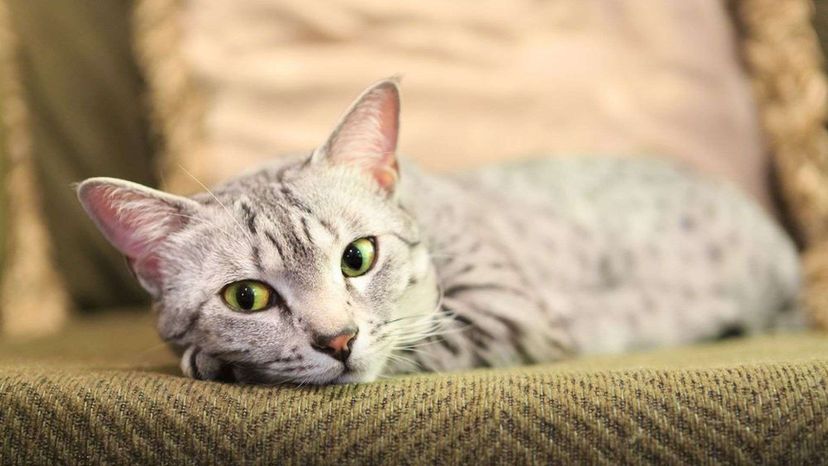
shutterstock
Identify the cat breed in this image.
Siamese
California Spangled
Egyptian Mau
Almost anyone who is looking for a cat would do well with an Egyptian Mau. They are highly intelligent and devoted to their family.
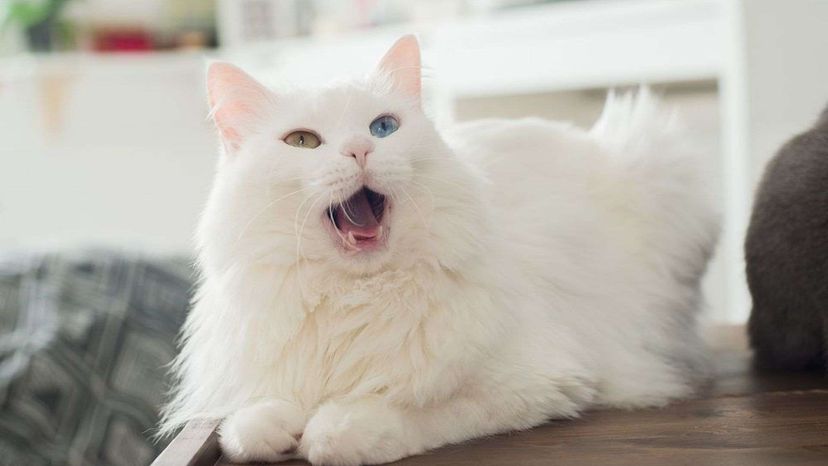
shutterstock
Identify the cat breed in this image.
British Longhair
Turkish Angora
The Turkish Angora is a natural breed that takes its name from the city of Ankara in Turkey, which was formerly known as Angora. For centuries, the cats have been attractive souvenirs for invaders of or visitors to Turkey and may have been the first long-haired cats to arrive in Europe. One theory suggests that Vikings brought them from Turkey more than a thousand years ago.
Devon Rex
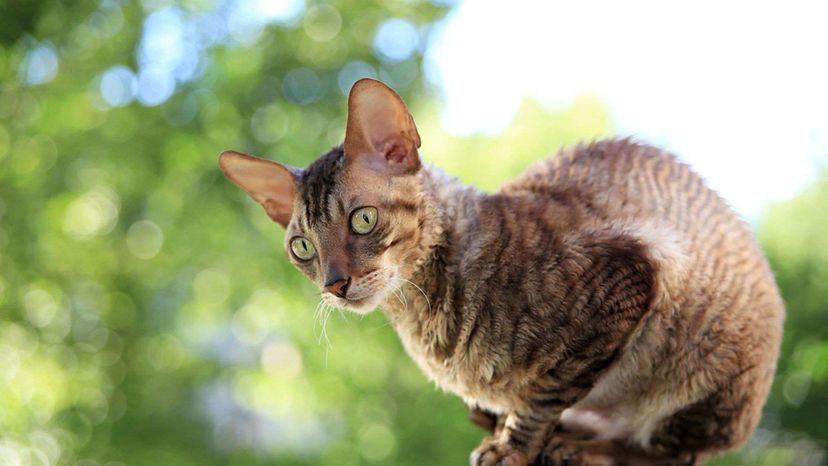
shutterstock
Identify the cat breed in this image.
Cymric
Cornish Rex
The Cornish Rex is sometimes referred to as the Greyhound of the cats, because of the sleek appearance and the galloping run characteristic of the breed. These cats tend to stay playful and kittenish throughout their long lives.
Dwarf Cat
Advertisement
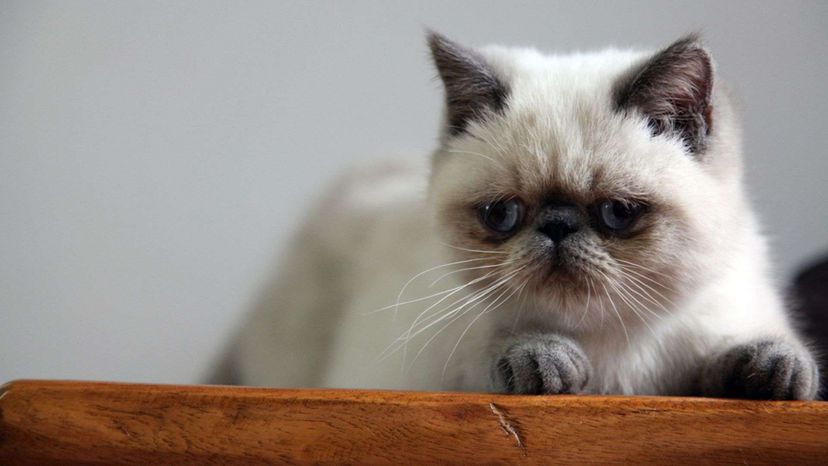
shutterstock
Identify the cat breed in this image.
Dragon Li
Manx
Himalayan Cat
Unlike its parent breeds, the Persian and the Siamese, which are considered natural breeds, the Himalayan Cat is a man-made breed developed by crossing Persians with Siamese to bring in the color points and blue eyes of the Siamese. Breeders began to work toward this goal in 1931, at first simply to determine how the colorpoint gene was passed on.
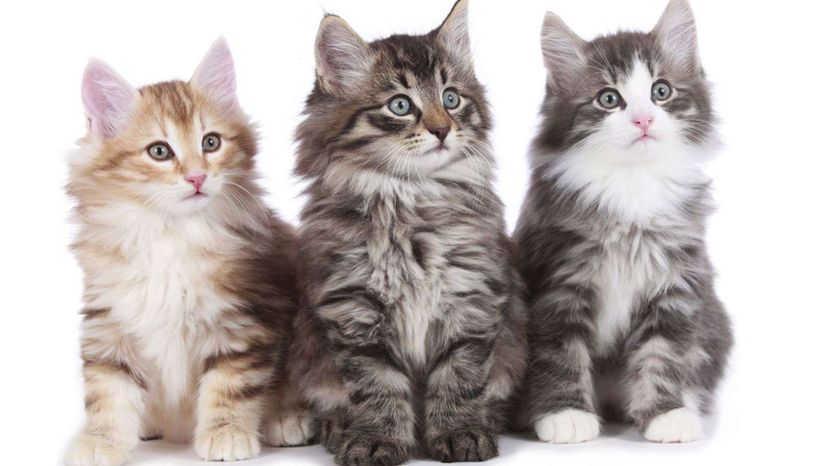
shutterstock
Identify the cat breed in this image.
Norwegian Forest Cat
Norwegian Forest cats (Wegies for short) are big cats. Males can weigh 13 to 22 pounds or more, with females somewhat smaller. The Wegie matures slowly and isn't full grown until 5 years of age.
LaPerm
Raas
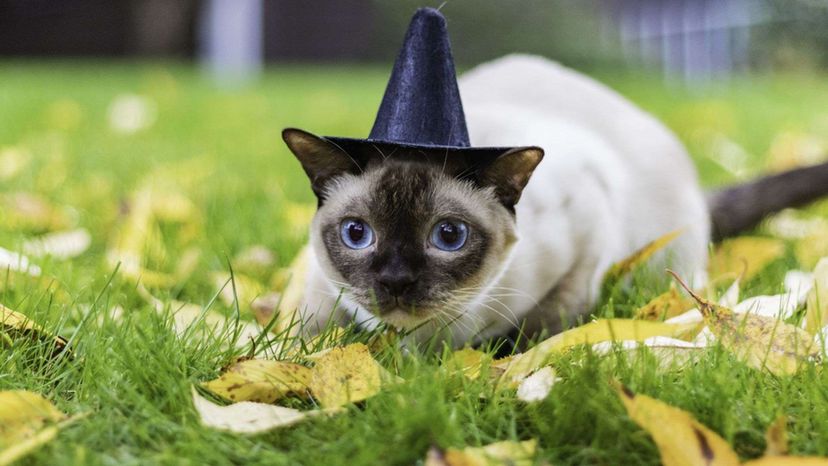
shutterstock
Identify the cat breed in this image.
Siberian
Tonkinese
Tonkinese cats are medium-sized and considered an intermediate type between the slender, long-bodied modern Siamese and British Burmese. Tonkinese are intelligent, active, vocal and generally people-oriented cats, playful and interested in everything going on around them.
Suphalak
Advertisement

shutterstock
Identify the cat breed in this image.
Sphynx
Devon Rex
The Devon Rex is often described as having an elfin appearance, with large ears, high cheekbones and striking eyes. Their soft, wavy fur is the most prominent characteristic.
Cornish Rex
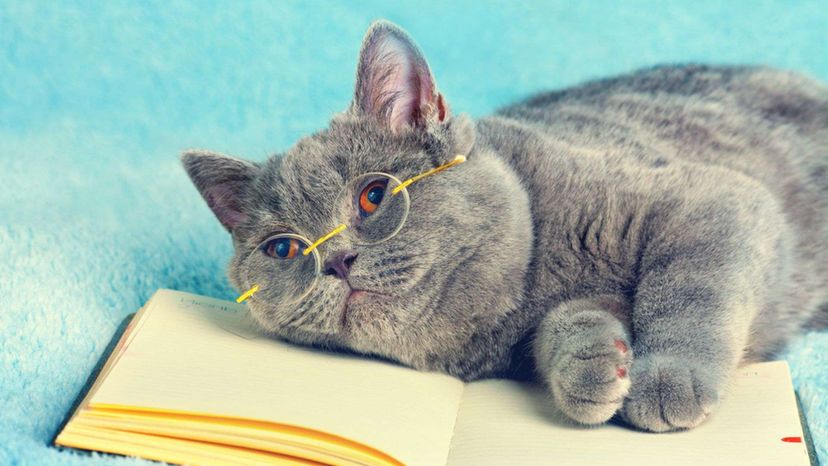
shutterstock
Identify the cat breed in this image.
Chartreux
The Chartreux is known for its gray-blue color, wooly double coat, powerful build, and mild temperament. They are silent but communicative, often compared to a mime.
Scottish Fold
American Curl
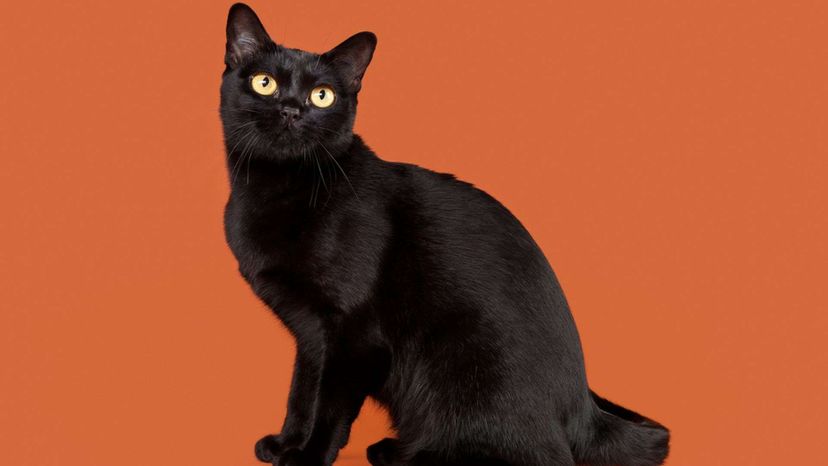
shutterstock
Identify the cat breed in this image.
Russian Blue
Tonkinese
Bombay
The Bombay, named for the exotic port city of India, has no connection with the subcontinent but was created from crosses between sable Burmese and black American Shorthairs to resemble a black panther in miniature.
Advertisement
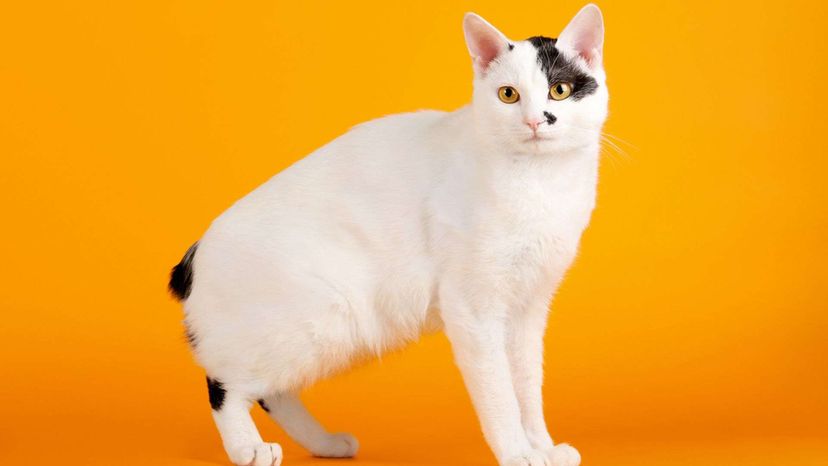
shutterstock
Identify the cat breed in this image.
Japanese Bobtail
The Japanese Bobtail breed's tell-tale characteristic is a short "bunny†tail that can be flexible or rigid, with one or more curves, angles or kinks. It is said that the first bobtailed cats arrived in Japan as gifts from the emperor of China to the emperor of Japan.
Korat
Manx
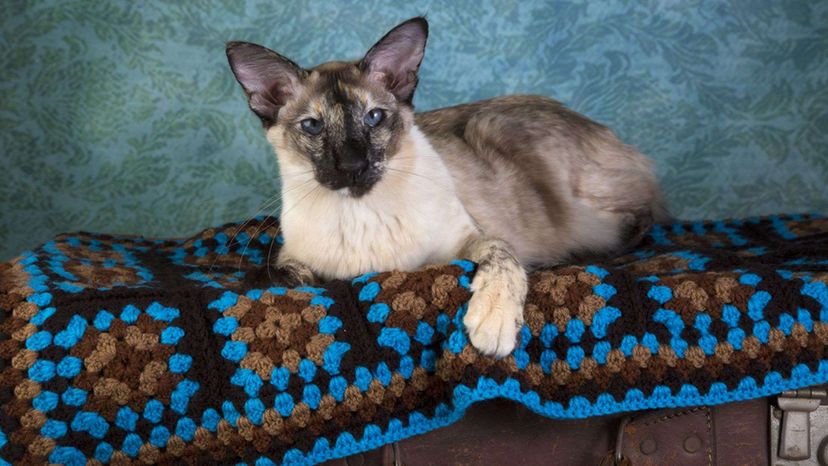
shutterstock
Identify the cat breed in this image.
Singapura
Balinese
The personality of the Balinese is essentially the same as that of the Siamese - extremely gregarious and easily trainable. They are loud and playful cats.
Munchkin
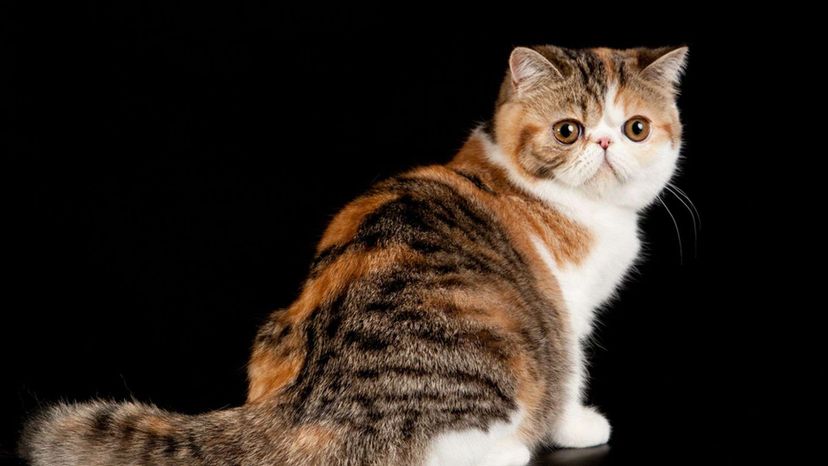
shutterstock
Identify the cat breed in this image.
Exotic Shorthair
The Exotic Shorthair was developed by crossbreeding Persians with the American Shorthair. The Exotic is slightly more intelligent than the traditional Persian and gets along well with children and other pets.
Oriental Shorthair
Devon Rex
Advertisement
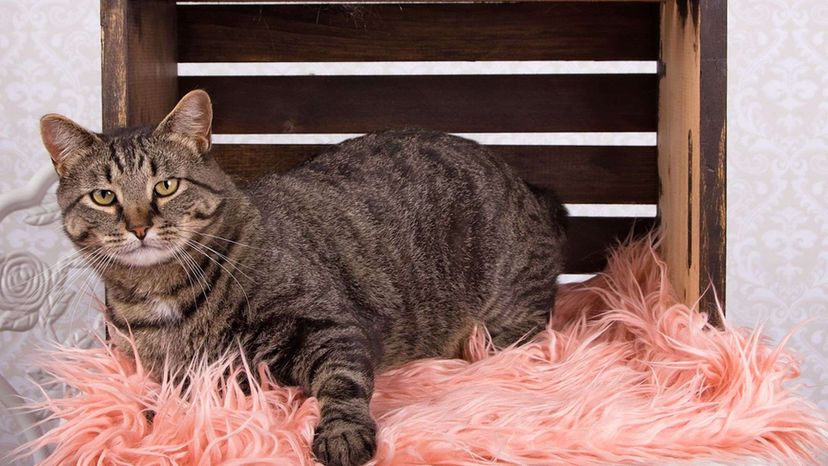
shutterstock
Identify the cat breed in this image.
Manx
Manx cats are allegedly developed from a line of tailless cats inhabiting the Isle of Man. Their hind legs are longer than their forelegs, giving them a gait similar to that of a rabbit. Manx cats have above average intelligence!
Singapura
Pixie-bob
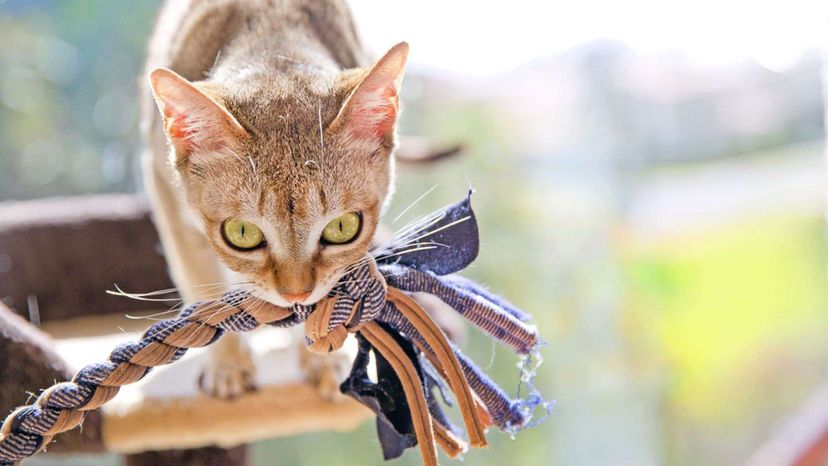
shutterstock
Identify the cat breed in this image.
Sphinx
Singapura
The Singapura is one of the smallest breeds of cats, noted for its large eyes and ears, brown ticked coat and blunt tail. They tend to be extroverted, curious and playful.
Nebelung
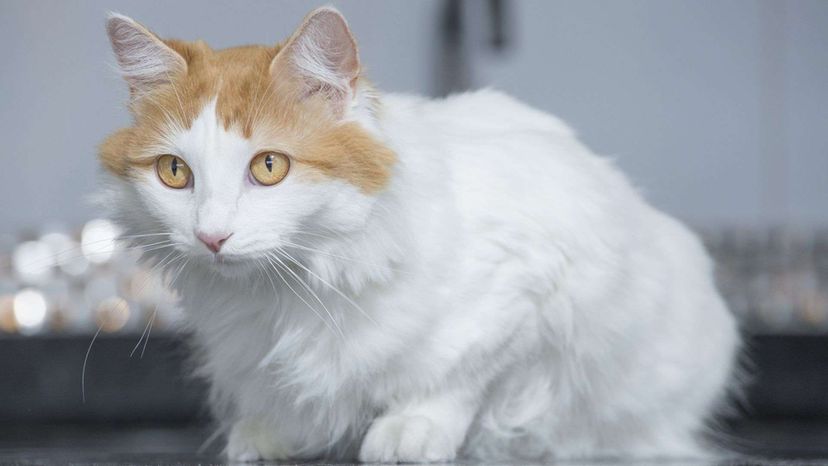
shutterstock
Identify the cat breed in this image.
Pixie-bob
Balinese
Turkish Van
Turkish Vans are often called "the swimming cats†because they're said to love water. Owners of this breed claim they've seen the kitty jump into showers, pounce at dripping faucets, and splash through puddles, kiddie pools, and thunderstorms.
Advertisement
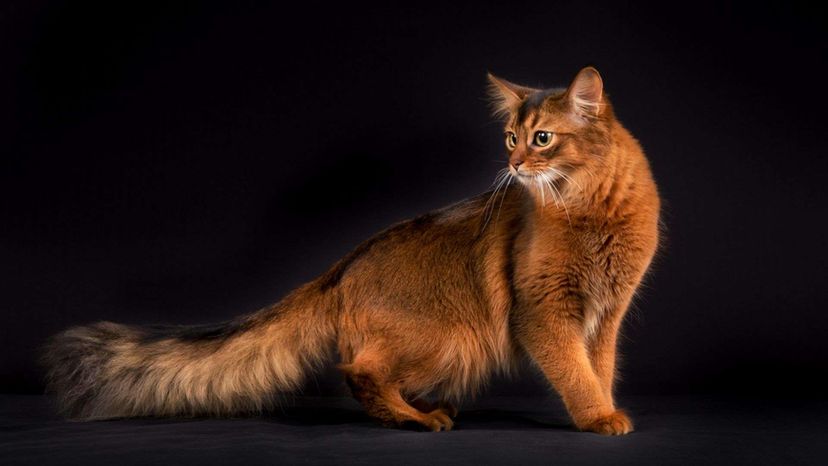
shutterstock
Identify the cat breed in this image.
LaPerm
Somali
The Somali is essentially the longhaired version of the Abyssinian. The coat on the Somali is full with exaggerated tufts of hair in the ears. The fur is soft without being woolly and the tail is fluffy like a fox's tail.
Turkish Van
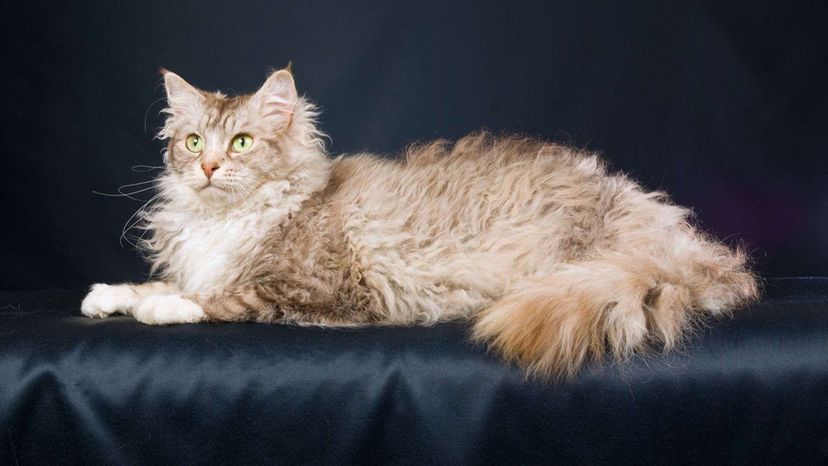
shutterstock
Identify the cat breed in this image.
LaPerm
The LaPerm emerged around the early '80s as a spontaneous mutation of cats bred for pest control. The breed was named after their curly coat which bears resemblance to a shaggy perm.
American Wirehair
Ragamuffin
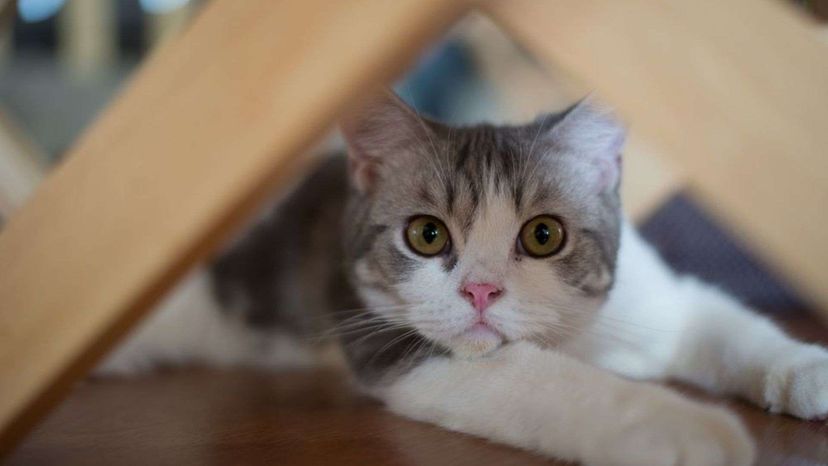
shutterstock
Identify the cat breed in this image.
American Wirehair
The American Wirehair breed originated in Upstate New York. American Wirehairs are similar to American Shorthairs, with the exception of a springy, wiry coat, including ear fur, and whiskers.
Javanese
Munchkin
Advertisement
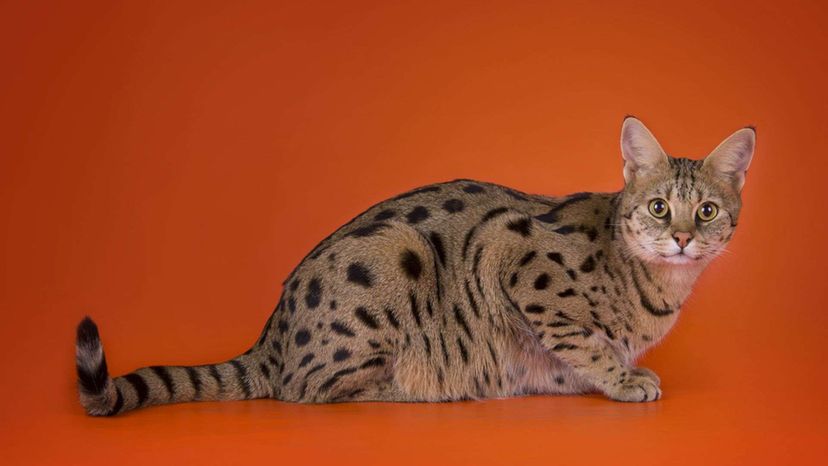
shutterstock
Identify the cat breed in this image.
Toyger
Cymric
Savannah
A Savannah cat is a cross between a domestic cat and the serval, a medium-sized, large-eared wild African cat. The cats are commonly compared to dogs in their loyalty, and they will follow their owners around the house like a dog. They can also be trained to walk on a leash and to fetch!

shutterstock
Identify the cat breed in this image.
Ragamuffin
Ragamuffins are friendly, attentive and affectionate, with a tendency to go limp when held. The physical traits of the breed include a rectangular, broad-chested body with shoulders supporting a short neck. Ragamuffins come in all coat colors and patterns, with a medium-length coat that increases in length toward the stomach.
American Bobtail
Himalayan
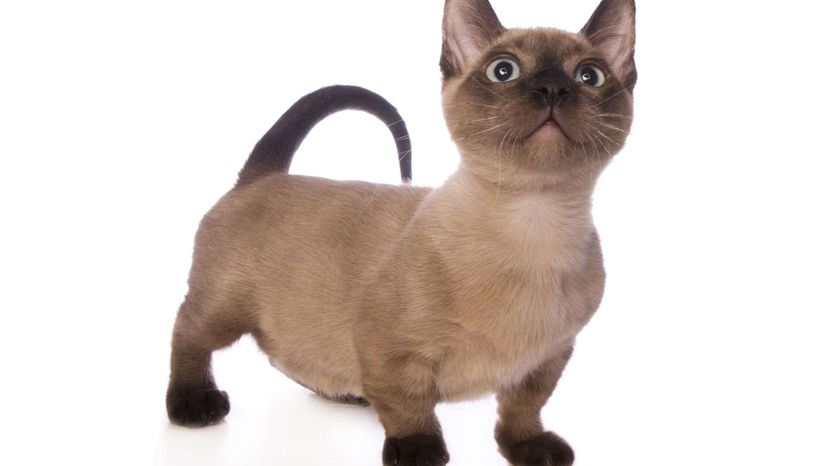
shutterstock
Identify the cat breed in this image.
Peterbald
Burmese
Munchkin
Munchkin cats have very short legs, due to a naturally occurring genetic mutation. Aside from their slightly funny walk (and a difficulty jumping onto high surfaces), Munchkins are considered to be a relatively healthy breed.
Advertisement

shutterstock
Identify the cat breed in this image.
Abyssinian
Havana Brown
Havana Browns were developed in England in the 1950s. They have a short, richly brown coat with varied markings. The breed tends to be loud and high-strung, but they are very intelligent and handsome.
Devon Rex

shutterstock
Identify the cat breed in this image.
Korat
Somali
Toyger
Creator of the Toyger breed, Judy Sugden, has stated that the breed was developed in order to inspire people to care about the conservation of tigers in the wild. They look like a little toy tiger!
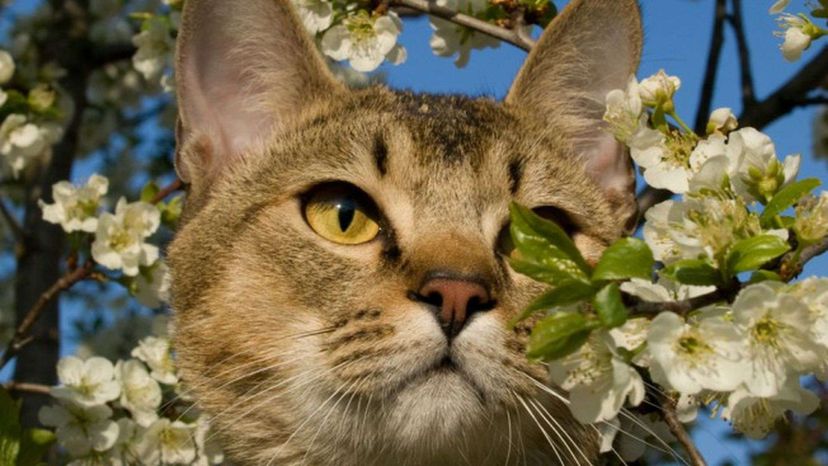
shutterstock
Identify the cat breed in this image.
Pixie-bob
Pixie-bobs are a fully domestic breed of cat bred to resemble the North American Bobcat. Unlike other breeds, male Pixie-bobs are usually larger than females.
Oriental Shorthair
Cymric
Advertisement

shutterstock
Identify the cat breed in this image.
Snowshoe
Chausie
Javanese
The Javanese is a longhaired variety of Siamese dressed in colorpoint colors. Javanese are extremely fond of their people. They like to be "helpful†and will follow their owner around at any chance they get. They are loud and attention-seeking.

shutterstock
Identify the cat breed in this image.
Oriental Shorthair
The Oriental Shorthair is reported to trigger almost little to no allergies for those who are said to be allergic to cats. They are also among the smartest (if not the smartest) of all cat breeds. These intelligent cats enjoy interaction, stimulation, and play time. They are naturally inquisitive by nature, even more so than your typical cat.
Bengal
Burmese
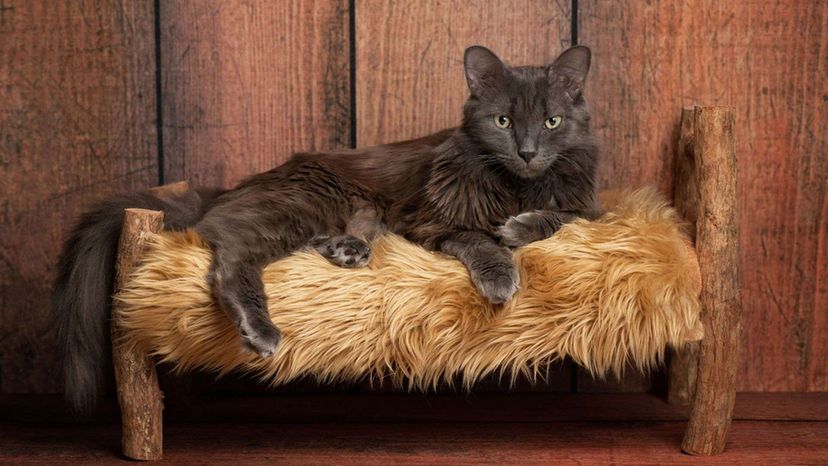
shutterstock
Identify the cat breed in this image.
Burmese
Nebelung
The Nebelung is a rare breed of domestic cat. It means "creature of the mist" in German. The overall appearance is of a long, sturdy, well-muscled cat.
American Shorthair
Advertisement
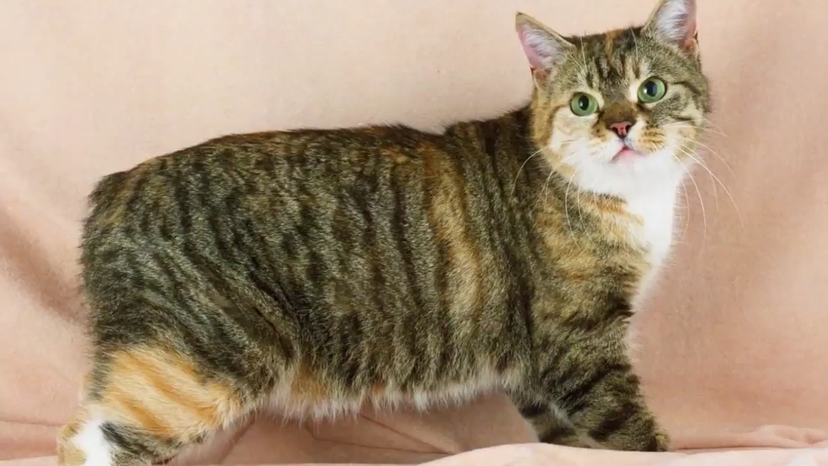
youtube
Identify the cat breed in this image.
Cymric
The Cymric is known for his lack of a tail, but not every Cymric is completely tailless. Some, known as "longies,†have a normal-length tail, and others, known as "stumpies,†have short tails. A Cymric with no tail is called a "rumpy†and one with just a rise of bone at the end of the spine is known as a "riser.â€
Birman
Sphynx
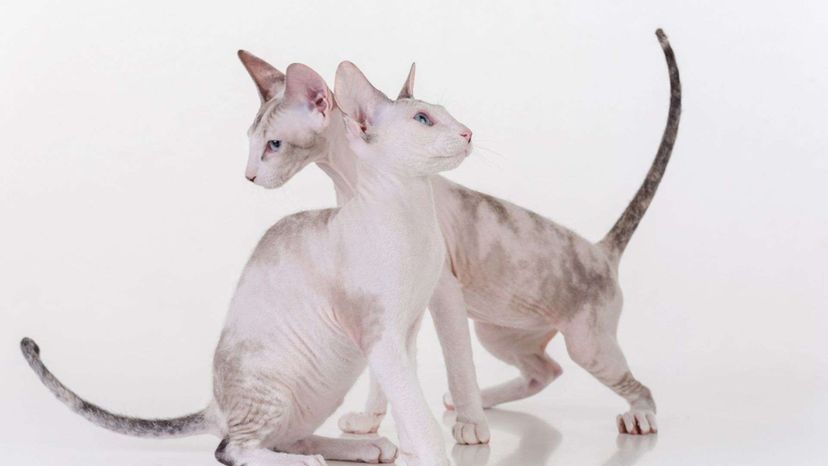
shutterstock
Identify the cat breed in this image.
Cornish Rex
Siberian
Peterbald
The Peterbald is a relatively recent hairless cat breed from St. Petersburg, Russia. The breed originated as a cross between the Donskoy and Oriental Shorthair, demonstrating that the Donskoy's hair loss gene is dominant, unlike the recessive hairlessness gene in the Sphynx. Peterbald cats are elegant, long and tubular, with a long, whiplike tail.
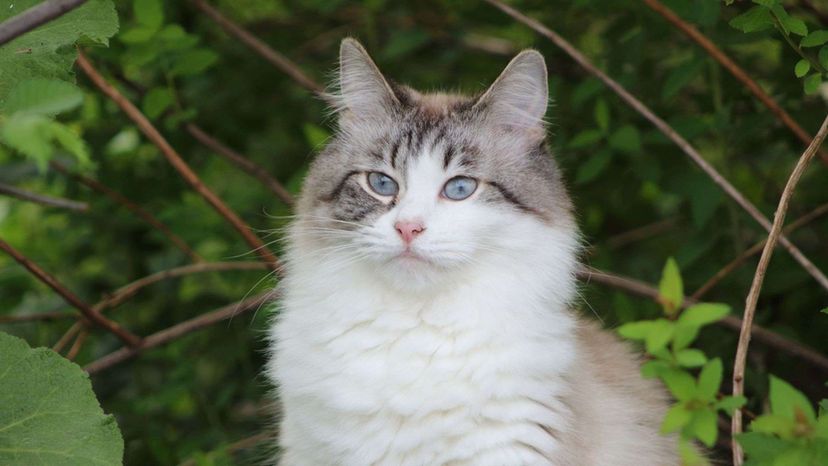
shutterstock
Identify the cat breed in this image.
Birman
Snowshoe
Snowshoe cats were first produced in Philadelphia when a Siamese breeder's cat gave birth to three kittens with white feet. They are one of the more uncommon breeds, as it is difficult to produce the desired markings.
Norwegian Forest
Advertisement

Youtube
Identify the cat breed in this image.
Russian Blue
Colorpoint Shorthair
The Colorpoint Shorthair breed was initially created by crossbreeding Siamese with the American Shorthair - the same mixture that created the Oriental Shorthair, but with different goals. The Colorpoint Shorthair shares the point-coloration pattern with the Siamese, but in the nontraditional colors of red, cream, tortoiseshell, and lynx (tabby) points.
Bombay
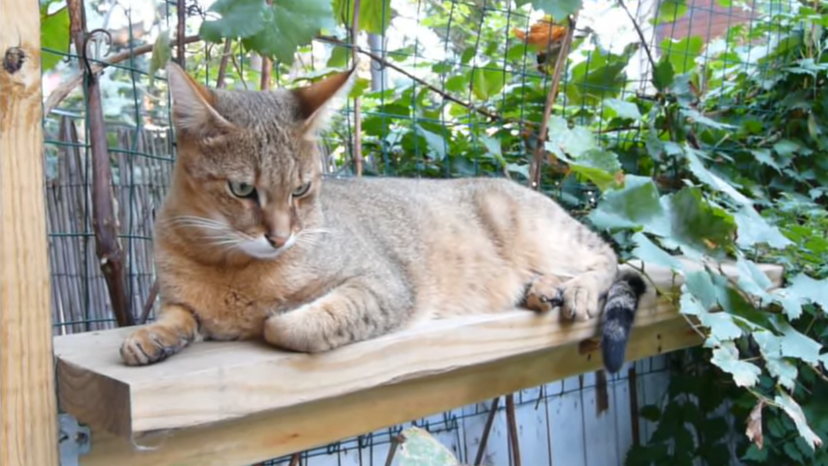
youtube
Identify the cat breed in this image.
Egyptian Mau
Nebelung
Chausie
The Chausie is an exotic hybrid. They are unusual and unpredictable, and can be dangerous if mishandled and destructive if bored. Male Chausies are not usually fertile until after four or five generations away from Jungle Cat breeding.
You Got:
/50
Shutterstock